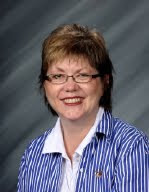(Correct responses at end of blog)
1. Salem, Massachusetts is best-known for:
A. Paul Revere's Ride
A. Paul Revere's Ride
B. Witchcraft Trials
C. The Triangle Shirtwaist Factory Fire
2. Ionic, Doric, and Corinthian are examples of:
A. leaves
B. monarchs
C. columns
3. The movement of molecules of liquid through a membrane is called:
A. photosynthesis
B. osmosis
C. conduction
4. Which of these writers was a member of the Beat Movement:
A. Jack Kerouac
B. Walt Whitman
C. Kurt Vonnegut
5. "A bird in the hand is worth two in the bush" means:
A. It is easier to say exactly what you mean than try to hide the truth.
B. It is better to be content with what you have than to risk losing it to get more.
C. A domesticated bird is more valuable than birds in the wild.
C. A domesticated bird is more valuable than birds in the wild.
If you answered all of these questions correctly, you could be a culturally literate American.
So, what does it mean to be culturally literate? In 1987, E. D. Hirsch, a professor from the University of Virginia published Cultural Literacy: What Every American Needs to Know. It includes a lengthy list of names, events, places, dates, and concepts that Hirsch contends all Americans should recognize to be considered culturally literate. Since his first book, Hirsch and the Core Knowledge Foundation have published a variety of materials in support of teaching a sequence of core knowledge. (See an example of the grade 6-8 sequence here). The site offers lesson plans and information about becoming a Core Knowledge School.
From the beginning Hirsch has had his supporters and detractors. Those in support of Hirsch agree that in order to function in our modern society, each American should have a core of knowledge that defines what it means to be an American. If we are culturally literate, we understand the allusions and references that are part of our history and culture. For example, if you are in retail sales and your boss describes one of the salespersons as having the "Midas Touch," she assumes that she does not have to explain to you that she thinks this employee can turn anything into money. When applying cultural literacy to the classroom, Hirsch advocates teaching a core knowledge that emphasizes specific information for students to learn. It is a "lasting body of knowledge, which includes such topics as the basic principles of constitutional government, mathematics and language skills, important events in world history, and acknowledged masterpieces of art, music and literature."
Those who criticize Hirsch say that his concepts are too Euro-centric and too male. They contend that the publications do not address issues of multi-culturalism or the accomplishments of women. Others fear that putting too much emphasis on the lists and facts discourages higher order thinking skills.
I think that cultural literacy has its place in education. I agree with Hirsch's concept that the more you know, the more you can know. In other words, a good foundation is necessary for an edifice to stand. Democracy is the edifice of American life. As members of our democracy, we need a core of knowledge that helps define what it means to be an American. As a nation, we need a collective understanding of our past, how we function, and how we will continue to be in control of our future. I don't believe that we can teach our students the importance of self-determination if we do not first help them become literate Americans.
Check out this site for more cultural literacy tests:
1. B; 2. C; 3. B; 4. A; 5. B
